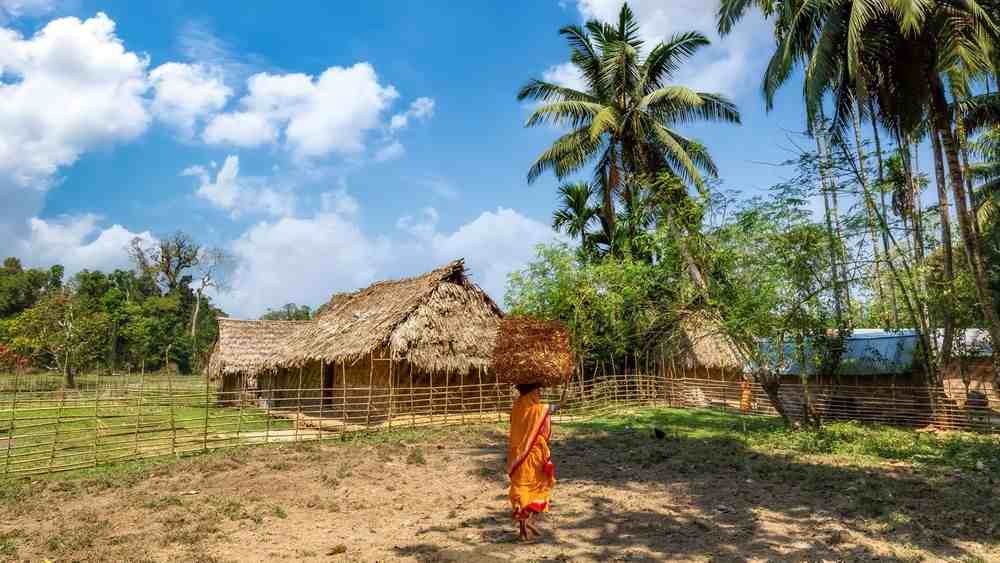How Did Indian Villages Become Cleanest in the Country? Find Out

How Did Indian Villages Become Cleanest in the Country? Find Out
Mawlynnong, near the Meghalaya-Bangladesh border, boasts an impressive 93.71 per cent literacy rate and the title of Asia’s cleanest village.
18 May 2024
By Ishika Kumar
The everyday life in some of India’s cleanest villages has become a utopian reality, with fresh, breathable and pure air, clear waters and lush greenery surrounding certain areas and milieus of the village streets.
Villages like Majuli, Yana, Nako and Piplantri have transformed their environments through sustainable practices such as banning plastic, organising clean-up drives and planting trees. Here’s how these villages achieved what once seemed impossible.
· Mawlynnong, Meghalaya: Mawlynnong, near the Meghalaya-Bangladesh border, boasts an impressive 93.71 per cent literacy rate and the title of Asia’s cleanest village. The villagers’ strong civic sense is evident in their ban on plastic and rigorous clean-up activities, where even the smallest leaf is swept away.
Mawlynnong’s success in curbing open defecation by building toilets in homes and public spaces has greatly contributed to its cleanliness. The village’s efforts to repurpose plastic waste and maintain flower-filled spaces further enhance its reputation as a model for cleanliness.
· Majuli, Assam: Majuli, an island in Assam’s Jorhat, renowned for being India’s first island district, has become a model of cleanliness.
Surrounded by the majestic Brahmaputra River, Majuli’s bamboo homes ensure a low carbon footprint. The residents, often seen with brooms in hand, are committed to keeping their island clean. The Mishing tribe, who inhabit the island, follow the Donyi Polo religious system, emphasising the interconnectedness of everything in the universe. This belief translates into their efforts to maintain a pristine environment, setting a remarkable example for sustainability.
· Khonoma, Nagaland: Khonoma, Asia’s first green village, is a testament to the power of community action. Once battling deforestation in the late 1990s, Khonoma banned tree cutting and embarked on a path of environmental restoration. Today, paddy fields and lush forests dominate the landscape, home to the endangered Blyth’s Tragopan bird.
The village’s commitment to cleanliness is evident in the regular community clean-up efforts, involving schoolchildren who empty dustbins along the paths every Saturday. This initiative, ongoing since 2005, instils a sense of responsibility and pride in the younger generation.
· Dawar, Jammu: In the Gurez Valley of Jammu, Dawar village, home to the Shina tribal community, has made significant strides in sustainability. The village banned plastic bags, developed a sewage system and opted for wooden log homes over cement to minimise environmental impact. These initiatives, along with planting more trees, have helped Dawar maintain its cleanliness and sanitation, attracting tourists to its traditional handicrafts and cultural events.
· Nako, Himachal Pradesh: Nestled on the Indo-Tibetan border in Himachal Pradesh’s Kinnaur district, Nako offers breathtaking views of the Himalayas and waterfalls believed to be the homes of fairies. The village’s air, so crisp it’s almost painful to breathe, is a result of both natural beauty and the villagers’ dedication to cleanliness. Roadside garbage bins and frequent signs promoting cleanliness are common sights.
Nako’s buildings, constructed from local materials like rammed earth and stone, minimise pollution from transporting building materials, reinforcing their commitment to environmental sustainability.
· Chitkul, Himachal Pradesh: Chitkul, the last inhabited village before the Indo-Tibetan border, showcases the harmonious blend of natural beauty and sustainable practices. The village focuses on solar lighting, reforestation, organic farming and the use of eco-friendly materials. The introduction of solar street lights and the promotion of LED lights demonstrate Chitkul’s commitment to renewable energy and reducing its carbon footprint.
· Harpur Bochaha, Bihar: Harpur Bochaha in Bihar’s Samastipur district transformed from a barren wasteland to a thriving oasis under the leadership of Prem Shankar Singh. By digging three large ponds and constructing a three-kilometre-long canal, the village revived 3,000 acres of land and planted over 17,000 fruit-bearing trees. This transformation increased the village’s per capita income and literacy rates, earning national recognition for their reforestation and sustainable agricultural practices.
· Piplantri, Rajasthan: Piplantri, in Rajasthan’s Rajsamand district, transformed its landscape by celebrating the birth of girl children with the planting of 111 trees. This initiative, spearheaded by Shyam Sunder Paliwal, has not only changed the villagers’ mindset but also enriched the environment. The trees, nurtured for 18 years, ensure a sustainable future and provide financial security for the girls’ weddings.
· Yana, Karnataka: Yana, a village in Karnataka, is known for its striking black crystalline karst limestone rock outcrops and is one of the wettest places in the world. Despite the influx of tourists, who trek to see the swayambhu linga (self-originated idol) in the caves, Yana maintains its cleanliness through regular cleanup drives organised by the forest department. The village’s hygiene practices, including discouraging footwear in certain areas, ensure that the natural beauty of Yana remains unspoiled.
These villages exemplify the transformative power of community participation and sustainable practices. Through collective effort and innovative solutions, they have achieved what once seemed impossible, setting a precedent for other regions to follow. Their success stories highlight the importance of local leadership and community involvement in driving environmental and socio-economic improvements.













